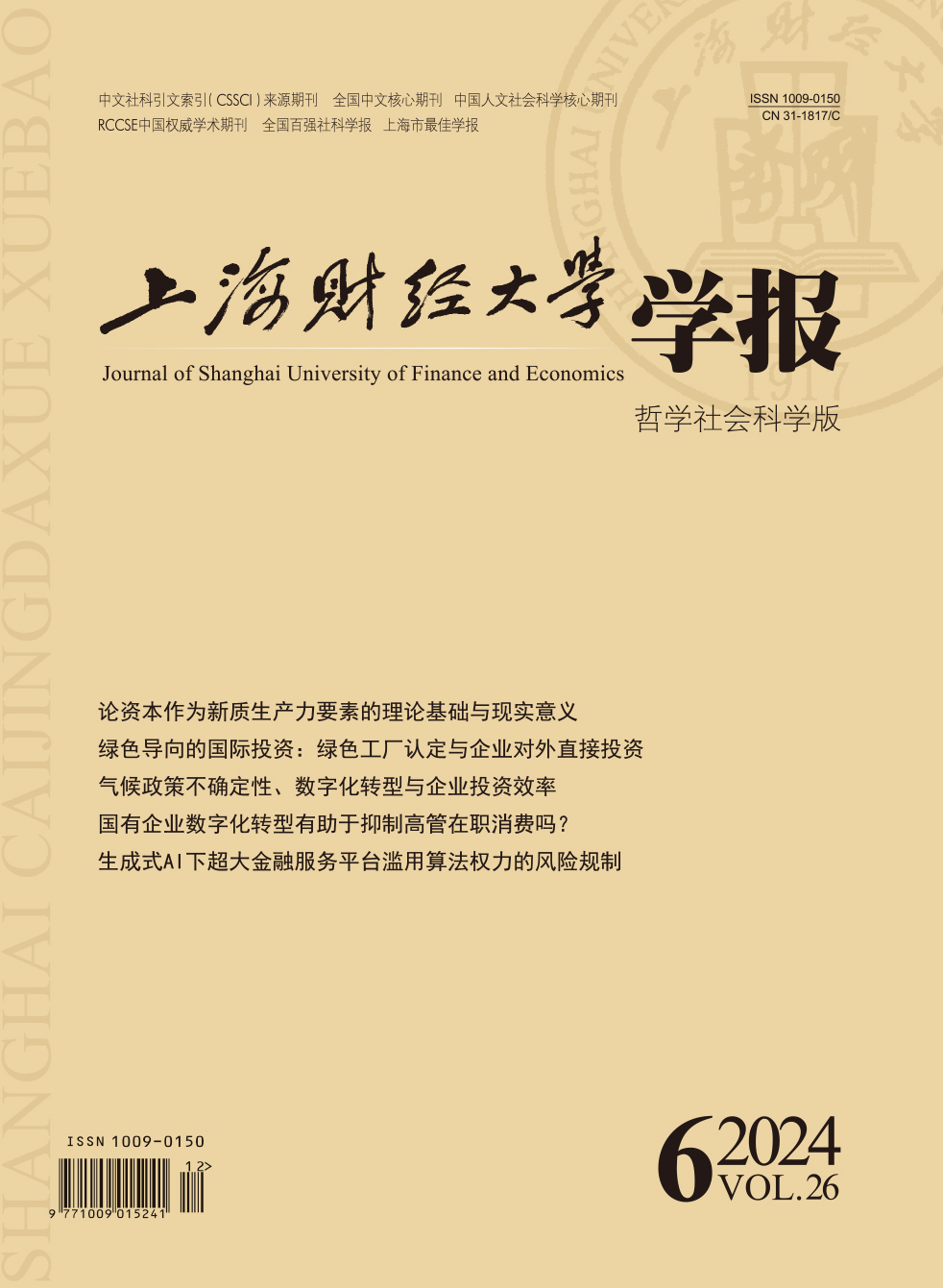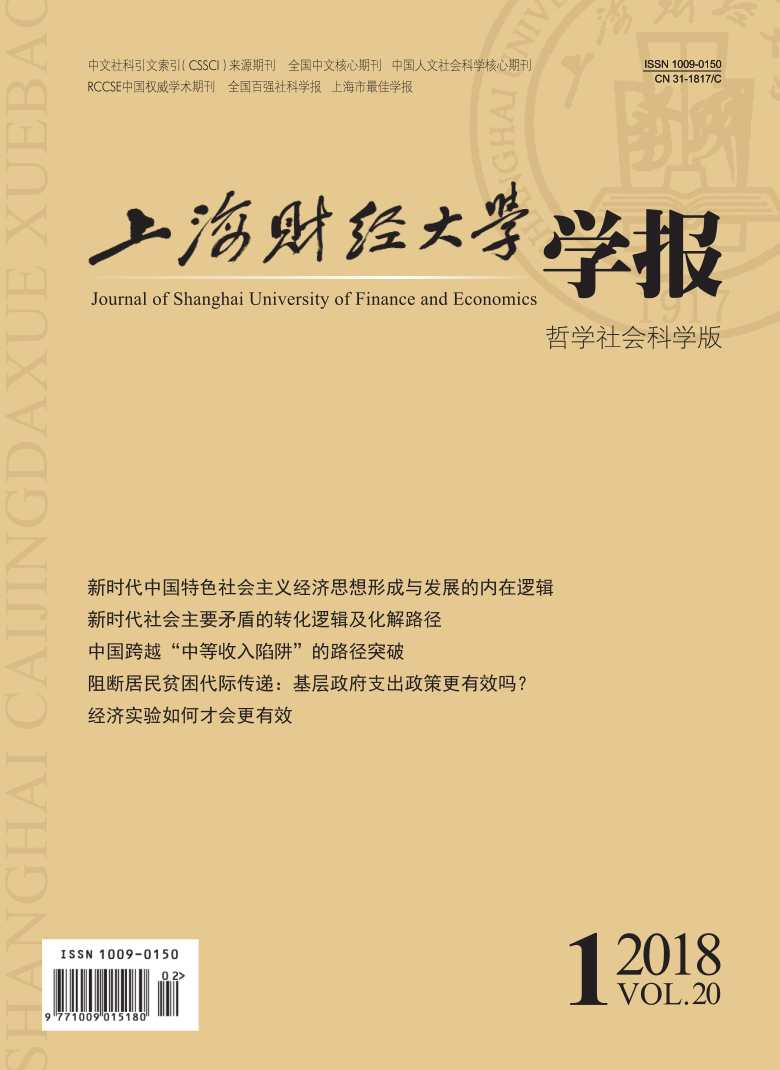“中等收入陷阱”的本质可理解为一国在中等收入水平处收敛而达到的一种相对稳定的状态。那么,新常态时期潜在增长率下降是否意味着我国在向中等收入水平收敛?这一命题能够从“中等收入陷阱”的视角重新审视新常态时期的种种变化,进而为引领新常态提供新的理论思路。文章首先通过经济增长收敛理论对我国经济增长的收敛路径进行识别,发现我国目前的经济增长正处于中等收入的收敛曲线上,继续沿现有曲线收敛将难以顺利向高收入阶段跃升。那么,新常态时期我国是否具备向高收入阶段跃升的动力条件?文章研究表明,技术进步与金融效率对经济增长的促进作用均在新常态时期得到明显提升;两大驱动因素之间则以相互强化的方式发挥其内生作用,并在新常态时期以更高的水平相互融合,这一良好势头说明我国阶段性动力转换初具成效。因此,为了顺利实现向高收入水平跃升,需要促进科技与金融的深入融合,继续挖掘两大因素的潜能。
中国跨越“中等收入陷阱”的路径突破——基于增长收敛理论的识别及“双轮驱动”检验
摘要
参考文献
2 陈守东, 孙彦林, 毛志方. 新常态下中国经济增长动力的阶段转换研究[J]. 西安交通大学学报(社会科学版), 2017, (1).
4 贾康, 苏京春. 中国的坎: 如何跨越" 中等收入陷阱”[M]. 北京: 中信出版社, 2016.
8 [英国]约翰•希克斯. 经济史理论[M].北京: 商务印书馆, 1987.
9 [美国]约瑟夫•熊彼特. 经济发展理论[M]. 北京: 商务印书馆, 1990.
10 闫森. 经济增长收敛与" 中等收入陷阱”——基于亚洲经济体的实证研究[J]. 亚太经济, 2017, (1).
11 赵昌文, 陈春发, 唐英凯. 科技金融[M]. 北京: 科学出版社, 2009.
12 Acemoglu D. Introduction to modern economic growth[M]. Princeton: Princeton University Press, 2008.
13 Aghion P, Howitt P. The economics of growth[M]. Cambridge: MIT Press, 2008.
14 Aiyar S S, Duval R, Puy D, et al. Growth slowdowns and the middle-income trap[R]. Washington: International Monetary Fund, 2013.
15 Barro R J, Salai-Martin X. Convergence[J]. Journal of Political Economy, 1992, 100(2): 223–251. DOI:10.1086/261816
16 Eichengreen B, Park D, Shin K. When Fast-Growing economies slow down: International evidence and implications for China[J]. Asian Economic Papers, 2012, 11(1): 42–87. DOI:10.1162/ASEP_a_00118
17 Eichengreen B, Park D, Shin K. Growth slowdowns redux: New evidence on the middle-income trap[R]. NBER Working Paper No. w18673, 2013.
18 Hansen B E. Inference when a nuisance parameter is not identified under the null hypothesis[J]. Econometrica, 1996, 64(2): 413–430. DOI:10.2307/2171789
19 Hausmann R, Pritchett L, Rodrik D. Growth accelerations[J]. Journal of Economic Growth, 2005, 10(4): 303–329. DOI:10.1007/s10887-005-4712-0
20 Ito T. Growth convergence and the Middle-income trap[J]. Asian Development Review, 2017, 34(1): 1–27. DOI:10.1162/ADEV_a_00079
21 Kharas H, Kohli H. What is the middle income trap, why do countries fall into it, and how can it be avoided? [J]. Global Journal of Emerging Market Economies, 2011, 3(3): 281–289. DOI:10.1177/097491011100300302
22 Lucas R E Jr. On the mechanics of economic development[J]. Journal of Monetary Economics, 1988, 22(1): 3–42. DOI:10.1016/0304-3932(88)90168-7
24 Ohno K. Avoiding the middle-income trap: Renovating industrial policy formulation in Vietnam[J]. ASEAN Economic Bulletin, 2009, 26(1): 25–43. DOI:10.1355/AE26-1C
25 Primiceri G E. Time varying structural vector autoregressions and monetary policy[J]. The Review of Economic Studies, 2005, 72(3): 821–852. DOI:10.1111/j.1467-937X.2005.00353.x
26 Schwartz E S, Moon M. Evaluating research and development investments[A]. Brennan M J, Trigeorgis L. Project flexibility, agency, and competition: New development in the theory and application of real options[M]. New York: Dxford University Press, 2000.
27 Solow R M. A contribution to the theory of economic growth[J]. The Quarterly Journal of Economics, 1956, 70(1): 65–94. DOI:10.2307/1884513
引用本文
刘金全, 王俏茹, 刘达禹. 中国跨越“中等收入陷阱”的路径突破——基于增长收敛理论的识别及“双轮驱动”检验[J]. 上海财经大学学报, 2018, 20(1): 29–42.
导出参考文献,格式为:





 8898
8898  8552
8552

